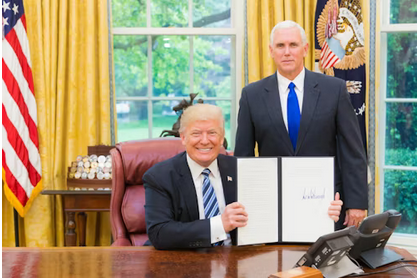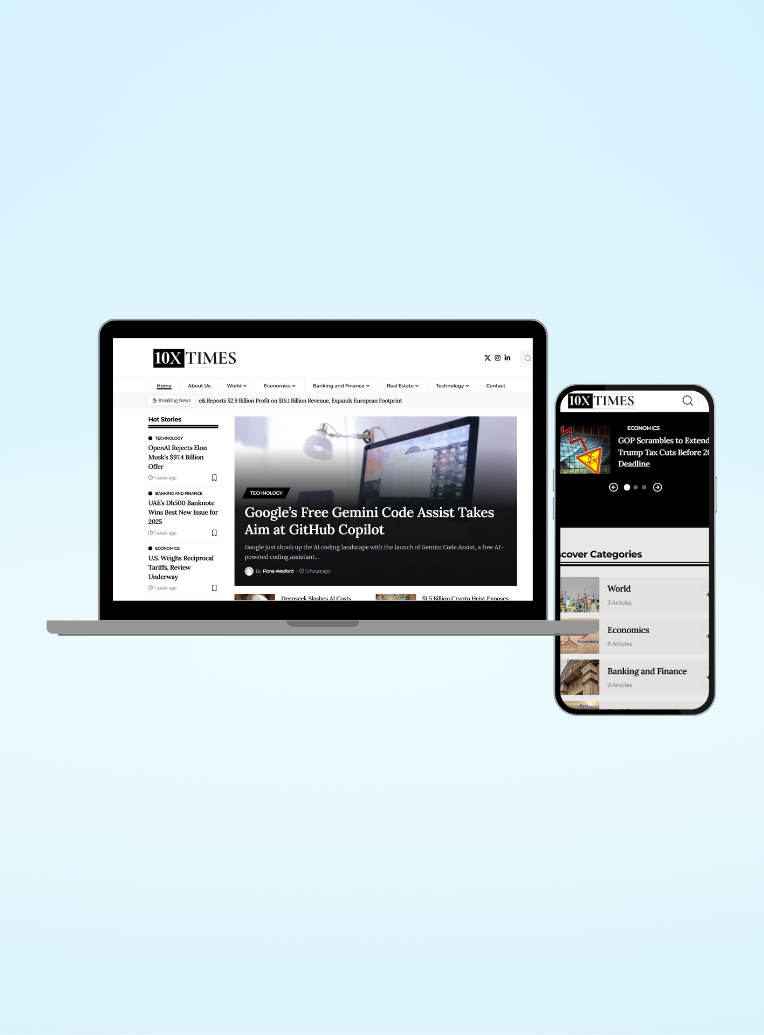
Donald Trump’s inflammatory tariffs on steel and aluminium imports began today, raising concerns of higher prices for consumers as well as retaliation from major trading partners. Friday’s action is a significant escalation in Trump’s protectionist trade agenda and heightens fears of a global trade war.
As Tariffs Take Effect Amid Trade Tensions
On February 10, Trump announced a 25 percent tariff on all steel and aluminium imported to the United State. These new tariffs narrow the range between those Trump imposed in his first term in office, and the swift retaliation from the European Union so far on has been robust.
Retaliatory tariffs will start on 1st April on US goods that were previously hit by levies after being slapped on by the Trump administration, setting a course for what they told us will be a “fair” “re-normalisation” of relations with the US. The measures are aimed precisely at politically sensitive parts of the United States and products from Republican-held states. Among the targets are some of America’s most recognizable exports, such as whiskey and Harley-Davidson motorcycles.
Canada Dodges Some, but Not All, Tariffs
Separately, Trump first threatened Canada with a 50 per cent punitive tariff on steel and aluminium in retaliation for Ontario’s proposed 25-per-cent tariff on electricity imports — a levy that affects states including Michigan, Minnesota and New York. But Ontario backed down on its electricity tax and Trump eventually stepped away from the 50% tariff threat.
Even that partial reprieve still leaves Canada a leading target of Trump’s trade policy. Brokers anticipated the new metals tariffs would apply to the highly diverse importation of about $150 billion of goods. The list includes everything from raw steel and aluminium, to a slew of consumer goods, from sporting equipment to electronics
Where does America get its metals?
Steel and aluminium are among the products Ottawa exports to the US, but the US also relies heavily on imports to meet its steel and aluminium needs. Imports of imported aluminium products from Canada exceeded $9.4 billion in 2024, making it the top supplier, according to the US Department of Commerce. The United Arab Emirates and China follow as big exporters, and just under $7 billion more comes in the form of a total from the rest of the world. Canada is also number one for Steel products at 7.1 billion, Mexico Brazil and South Korea.
Impact on Consumer Prices
They have been expected to raise prices on consumers on many of their offerings. An analysis of trade data by Reuters shows many imports that it has targeted, like industrial machinery and metal furniture and automobile aluminium parts, were among the largest import categories.
Consumers will ultimately bear the burden of these increased costs, experts say. Dean Baker, a senior economist at the Center for Economic and Policy Research, estimates car prices could rise $1,000 to $1,500. That 25 percent tariff on steel could add as much as $6,250 to the average price of cars imported from Canada and Mexico. Moreover, the National Association of Homebuilders has stated that the cost to build a home will also increase.
EU Reaction and Wider Trade Tensions
The EU’s own tariffs or counter-measures to the US trade war devices with steel and aluminium will in turn be applied as from the 1st of April to a whole array of US products such as: beef, poultry, soybeans, peanut butter and even jeans. the EU has threatened a second round of tariffs on the U.S. on April 13 covering another $19 billion of goods.
The European Union says the $28 billion in retaliatory tariffs it has imposed is equal to the value of tariffs Trump has put in place.
The Lessons of 2018
Trump’s earlier steel and aluminium tariffs in 2018 created a massive disruption in the market. Although the tariffs helped create jobs for domestic steel manufacturers, they also led to job losses in steel-dependent industries such as construction and automotive. The manufacturing sector, in fact, had a huge amount of job loss from the metals tariffs, research has found.
Prices for steel and aluminium also jumped in the period immediately following the tariffs, before relaxing back to pre-tariff levels. The actual costs, however, were high; reports showed, for example, the tariffs cost taxpayers hundreds of thousands of taxpayer dollars for each job saved or created.
Future Uncertainties
Adding to the trade tensions, Trump has pledged to impose additional tariffs on U.S. trading partners, to levy reciprocal tariffs and to impose new tariffs on imports from Mexico and Canada.
Along with persistent trade tensions with China, these steps create an extremely uncertain outlook for the world economy. As it enters a second week, it’s the spectre of the write-down impact of this ongoing trade war, which is widespread across the various sectors of the economy.






